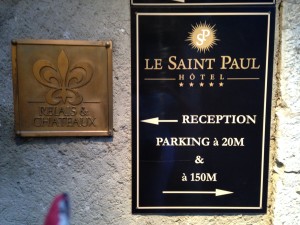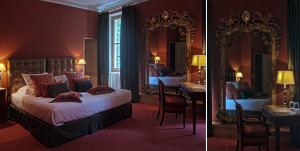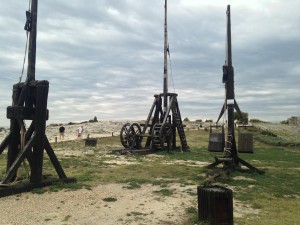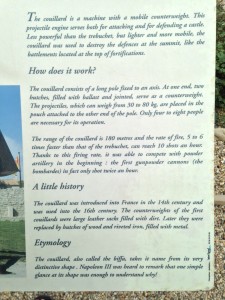Provence is medieval villages of fortified towns guarding its ancient borders with countless villages perched defensively on hilltops; and great cities like Arles, Aix and Avignon full of culture. This area of southeastern France is full of sunshine and extrodinary food and wine. Unless you have months to explore, visiting Provence is difficult to choose where to go. In the west, along the Rhône valley, are the Roman cities of Orange, Vaison-la-Romaine and Arles, and the papal city of Avignon, with its fantastic summer festival. Aix-en-Provence, the mini-Paris of the region, was home to Cézanne, for whom the Mont Ste-Victoire was an enduring subject, while Van Gogh favored St-Rémy and Arles. Of course, there is the wine region of Chateauneuf du pape, world famous for the local wines.
St. Paul de Vence is a beautiful medieval fortified village perched on a narrow spur
between two deep valleys on half an hour from Nice.
Hotel le Saint Paul – Arriving to Saint Paul de Vence one must enter the old walked stoned gate by calling on the intercom to security for the bollards to drop and allow you to drive inside the ancient city. The hotel rooms are huge and gorgeous. The hotel has 3 floors total. There are lovely views of the village.
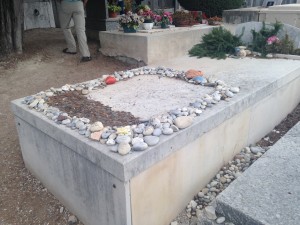
The Russian born painter Mark Chagall is buried in the Saint Paul–de–Vence cemetery. At the entrance, take the first right and the next left. The small stones are added by visitors as tributes (from a Russian and Jewish tradition).
Chateau Talaud – The first thing you notice when you turn off the main road is the entrance. The large gates and the tree-lined Boulevard leading to this prestigious 18th century Chateau surrounded by its own vineyards. The Chateau has only 5 rooms. Conny, the owner provides a relaxing bed and breakfast in a beautiful home. Dinner is served in the main dining room and breakfast is served in the courtyard.
The romantic “chateau-“inn is centrally located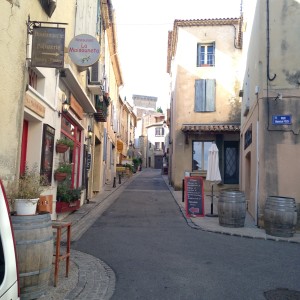 in Provence, very close to Avignon with the historical Papal Palace and Chateauneuf-du-Pape for “top”- Wine Tasting.
in Provence, very close to Avignon with the historical Papal Palace and Chateauneuf-du-Pape for “top”- Wine Tasting.
Château des Alpilles – the entrance is extremely impressive with the majestic Plain trees leading to the Chateau.
the entrance is extremely impressive with the majestic Plain trees leading to the Chateau.
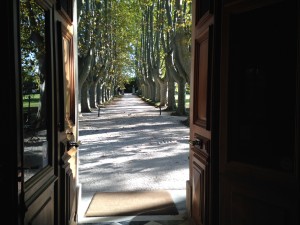
The Chateau offers a gorgeous swimming pool and large grounds with tennis courts. The rooms of the Manor (Castle) are large and have a fireplace and high ceilings. Each room is furnished differently with authentic furniture from the 19th Century, offering a warm, refined, luxurious and confortable living space. The hotel is located on seven-hectare at the foothills of «les Alpilles» very near to Saint Rémy de Provence.
La Miranda – Set in an old mansion located directly across from the Palais des Papes in the heart of Avignon.
La Mirande is steeped in secular history with 18th century-esque décor. The hotel is named after the famous room in the Palais des Papes, La Mirande, where the Pope’s representatives held receptions for the city’s notables and visiting high-ranking officials. Originally a Cardinal’s Palace in the 14th century, the ruins of La Mirande were restored during the 17th century to create the Hôtel de Vervins and its baroque façade by architect Pierre Mignard, later becoming the Hôtel Pamard between the late 18th and 20th centuries.
secular history with 18th century-esque décor. The hotel is named after the famous room in the Palais des Papes, La Mirande, where the Pope’s representatives held receptions for the city’s notables and visiting high-ranking officials. Originally a Cardinal’s Palace in the 14th century, the ruins of La Mirande were restored during the 17th century to create the Hôtel de Vervins and its baroque façade by architect Pierre Mignard, later becoming the Hôtel Pamard between the late 18th and 20th centuries.
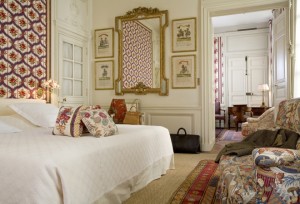 The twenty-six upper-floor rooms boast a unique décor, each with its own 18th century wall hanging recreated by Braquenié, Le Manach, Canovas, Comoglio and Rubelli, to name a few. The abundant Indienne fabrics, also known as “toile de Jouy”, are a perfect match for
The twenty-six upper-floor rooms boast a unique décor, each with its own 18th century wall hanging recreated by Braquenié, Le Manach, Canovas, Comoglio and Rubelli, to name a few. The abundant Indienne fabrics, also known as “toile de Jouy”, are a perfect match for
the silk-lined curtains with large pleats that pool softly on the floor.
The bright and cheerful rooms quickly help tired travellers relax and unwind. Many of them afford a splendid and unique view of the high walls of the Palais des Papes. The bathroom constitutes a noble room in itself, with a delightfully unexpected décor of vintage Mauny block-printed wallpaper, antique faucets and Carrare marble.
French celebration of traditional French farming awards in Avaignon.
.
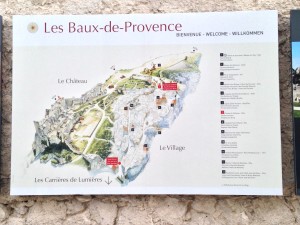
L’Oustau de Baumaniere – Translates to a “Beautiful way of Being”. The old fortress of Les Baux is very easy to walk to from the hotel with a set of stairs close to the hotel. Bicycles rentals are €11 for two hours. The hotel is host to a three-star Michelin restaurant.
There are incredible rock formations in this part of the Alpilles, with the road sometimes seemingly cut through the solid rock with single strokes of some giant’s knife.
The name “baux” means a prominent cliff but has become more well-known for the bauxite named after this region. Bauxite was first discovered in the Alpilles, and named after the village of Baux-de-Provence.
Just inside the entrance to the village are narrow cobblestone streets, terrace cafés, souvenir shops and tourists, very reminisence of St-Paul-de-Vence.
The village area is a stone and cobblestone medieval village time-warped to the 20th century. The real glory of Les Baux is the site, viewed from the exterior, and the chateau-fortress area beyond the village.
